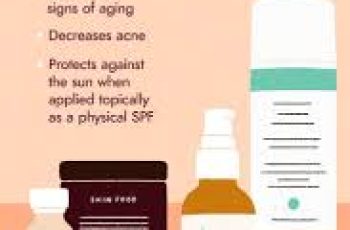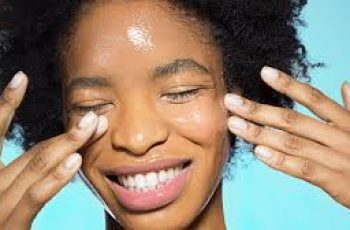
How to use Niacinamide and Alpha Arbutin
When it comes to layering skincare ingredients together there are a few things to remember to ensure you are reaping the rewards of this cocktail. It is usually considered a good idea to team a potent ingredient such as Alpha Arbutin with niacinamide because of the hydrating effects ensuring any dryness or irritation are combatted.
Now if you’re still a little muddled with how to use niacinamide and alpha arbutin don’t panic as we are here to clear things up, but before we jump into the science related stuff, lets quickly explain both ingredients and how they benefit the skin.
What is Alpha Arbutin?
Naturally occurring and extracted from the dried leaves of plants such as blueberries, bearberries, and cranberries. It can deliver impressive skin lightening and brightening results to the complexion. It can do this by targeting the cells in the lower layers of the skin that are responsible for the production of melanin helping to fade hyperpigmentation and dark spots. With its structure and ability to bind tyrosinase enzymes to catalyze melanin synthesis alpha arbutin can prevent signs of pigmentation from becoming darker.
Considering how potent alpha arbutin is, luckily for us it teams well with niacinamide which allows it to deliver results quickly with enhanced effects to the overall look of the skin.
What does niacinamide do for the skin?
I feel as though I have explained what niacinamide a few times is here before, so now I’ll quickly run through some of its key benefits for the skin.
Helps keep the skin barrier fully functioning with the correct levels of water and oil enabling it to protect itself from daily free radical damage.
Helps to minimise the appearance of pores, fine lines, and wrinkles
Has the ability to regulate the natural sebum production in the skin
Can help reduce any signs of hyperpigmentation, dark spots, uneven skin tone and melasma
Those are the main benefits of niacinamide, but if you are wanting to know more you can check out our blog post about how to use niacinamide on the face.
What goes first Alpha Arbutin or niacinamide? When applying skincare products containing alpha arbutin and niacinamide it is considered best to first use alpha arbutin as it is more potent and much like many strong skincare ingredients can deliver a side effect of skin irritation and dryness. This is when niacinamide can step in and restore balance with its humectant traits enabling it to draw moisture into the lower layers of the skin and locking it into place. When niacinamide keeping the complexion plumped and youthful you’ll find alpha arbutin is able to work at evening out your skin tone and bringing uniformity to the skin. Can I use Arbutin and niacinamide together? Yes absolutely, as I have already described alpha arbutin and niacinamide make a perfect skin perfecting duo. Both ingredients are water-based and often formulated to feel lightweight for the skin. Whilst niacinamide can help restore the hydration for the skin it can also work at promoting the production of collagen, by teaming this with the skin brightening benefits of alpha arbutin you will find the build-up of dead skin cells are exfoliated away leaving you with healthier, happier, and firmer looking skin. Can I use hyaluronic acid with niacinamide and Alpha Arbutin? Considering that hyaluronic acid and niacinamide are both gentle on the skin I wouldn’t blame you for wanting to use both and team them with an alpha arbutin product. If it works for your skin, then continue to use them. For me personally, I always feel you get the best results by teaming two complimentary serums together. However, this doesn’t mean you can’t use all in your daily skincare routine, it is simply a case of using them during different parts of your day. For example, teaming hyaluronic acid and alpha arbutin in you morning routine will keep the skin hydrated whilst dark spots are targeted, not forgetting your daily SPF of course. You can then hit the reset the button and apply niacinamide in the evening to regulate the oil and maintain the glowing radiance you have gained. What can you not mix with Alpha Arbutin? For such a potent ingredient as alpha arbutin it is considered generally safe for the skin when teamed with other ingredients. It is just a case of keeping on top of the number of active levels of skincare ingredients you are using in your routine. Using too many active ingredients can be too harsh for the skin and often begin to compete, rendering them all useless. Regarding what not to mix with alpha arbutin when teaming it with niacinamide is vitamin C as they both deliver similar results for the skin which results in them counteracting each other and diminishing their potency and performance on the skin. How long can I use Alpha Arbutin? Although I have already expressed how the potency of alpha arbutin can cause some to suffer from increased skin irritation, it is considered surprisingly gentle on the skin. When using arbutin twice daily after cleansing you can build the skin’s tolerance and team this powerhouse ingredient with others such as retinols and even chemical peels. It’s always best to consult with a doctor or dermatologist to ensure you can use these ingredients in your daily routine. You may be surprised to hear that arbutin is found in many skincare products already on the market, from serums, moisturiser, and overnight face masks. Depending on the formula will determine how potent the percentage of arbutin is in the blend. Serums and moisturisers containing higher levels and if used incorrectly on a skin that has not performed a patch test for 24 hours may lead to some experiencing skin sensitivity. Can I use moisturiser after Alpha Arbutin? You can indeed! Applying a moisturiser (especially if it contains niacinamide) after alpha arbutin will not only keep the skin barrier healthy and allowing to protect itself, but it will also help arbutin reach the areas it needs and get to work reviving and evening out the complexion. Can I use Alpha Arbutin every day? Yes, you can use alpha arbutin everyday depending on your skin’s sensitivity and whether you have built its tolerance to the ingredient. After this you can apply alpha arbutin twice a day if needed, just ensure you stop using it after 3 months and allow your skin to have a break whilst preventing any further, long-lasting damage. Does Alpha Arbutin darken skin? Not at all, in fact it is known for brightening darker areas that are a result of sun damage and hyperpigmentation. The difference between alpha arbutin compared to other acids is the fact it is safe for all skin tones to use without the worry of the ingredient lightening the skin too much causing the overall tone to become uneven. So, there is a little more information about alpha arbutin, and this little-known skin secret can be used with niacinamide. Don’t forget if you have any question, you can come and find me on the Procoal Instagram so give us a follow. And if skin is your thing, check out our YouTube channel, The Green Sofa!
DQH Can I use salicylic acid first and then vitamin C?
It’s easy to create a skincare routine, but knowing how to use it is another thing entirely. In most cases, if you’re not getting the desired skin results, it could be due to the layering of conflicting ingredients. So, is it possible that salicylic acid and vitamin C are such ingredients? Or are these active ingredients the duo that’s been missing from your skincare routine? If you want answers, stick around because today we are going to explain the benefits of salicylic acid and vitamin C and how they can be used in your daily life.
What are the benefits of salicylic acid for skin?
Salicylic acid is one of the most commonly used beta hydroxy acids and is favored by many people with oily, acne-prone skin. This acid is derived from willow bark, and unlike its water-soluble relatives (called alpha-hydroxy acids), salicylic acid is oil-soluble, which means it can penetrate deeper into the lower layers of the skin. Once it reaches the lower layers, it can help unclog pores of excess sebum, dirt, bacteria, debris, and impurities. This results in clearer skin tones and greater definition.
Not only does salicylic acid benefit the underlying layers, but the outer surface of the skin benefits as well. When applied to the skin, salicylic acid removes the buildup of dead skin cells. This is accomplished by breaking the bonds that hold dead cells to the surface. Over time, this can cause the complexion to look dull and prone to acne, blackheads, and other blemishes.
If you’d like to learn more about salicylic acid and how it can improve your skin, check out this dedicated blog post from a beauty insider.
What are the benefits of vitamin C for skin?
Vitamin C is considered one of the most powerful antioxidants, which means it is very effective at fighting free radicals and preventing them from causing further skin damage. Examples of free radicals include pollution, central heating, UV rays and harsh climate. They attack proteins, fats and cell membranes as soon as they come into contact with the skin, causing signs of premature aging such as fine lines and wrinkles as well as hyperpigmentation, flaky patches of skin and loss of elasticity.
Many people usually prefer to use vitamin C in their morning routine as this ingredient gives the complexion a radiant glow. You’ll also find that vitamin C can target areas of hyperpigmentation, plumping the skin and reducing the appearance of fine lines and wrinkles.
The thing about vitamin C is that there are a lot of outdated studies going back to the 1950s that describe vitamin C as an unstable skin component. Thanks to improvements in modern technology, this is no longer the case as all products now contain a stable form of vitamin C.
Visit The Beauty Insider to learn more about vitamin C. So please check out our blog post.
Can I use salicylic acid first and then vitamin C?
Yes, you absolutely can. In fact, it’s thought that using salicylic acid before using vitamin C ensures it penetrates faster and works faster.
This is an efficient way to utilize two power sources, and the reason has to do with pH. For example, the skin’s natural pH is about 4.7, making it slightly acidic. Salicylic acid and vitamin C are also both acidic, and you’ll find that vitamin C is absorbed quickly into the skin. Therefore, using salicylic acid beforehand can increase the acidity of the skin and allow vitamin C to penetrate into the skin faster.
While this is considered an effective way to combine two powerful ingredients, you need to be aware of your skin type and how it reacts to certain active ingredients. Even people with perfect, normal skin can experience skin sensitivity and irritation. Therefore, always consult a doctor or dermatologist before using any new products on your skin.
It’s also important to follow skin application rules. In this case, you need to use the product correctly to ensure you get the best results for your skin. If you’re not sure what I mean, the basic rule for skin is to start with the thinnest consistency and work your way up to the thickest consistency. This prevents a barrier from forming on the surface, preventing other active ingredients from penetrating the skin.
Can I use salicylic acid at night and vitamin C in the morning?
Yes, absolutely, this is considered the most effective way to get returns without any adverse side effects. This is because there is enough time between applications to ensure that the skin’s pH levels return to balance.
You’ll also find that Vitamin C is rich in antioxidants and is perfect for use in the morning to ensure your skin is protected and looking its healthiest. Due to the small size of salicylic acid molecules, it is an acid that is able to reach the deepest parts of the skin. While this is effective at keeping skin clear, it also increases the risk of irritation and photosensitivity. Therefore, many people prefer to use powerful BHAs in their evening routine without exposure to UV rays, pollution, or harsh weather.
Warning: If you avoid using sunscreen every day, none of these ingredients will do what your skin needs. The combination of chemical peels and powerful ingredients increases the risk of further damage to the skin’s surface. Use SPF 50 every day to keep your skin protected and your lipid barrier healthy, even on cloudy days, keeping your skin in top condition.


